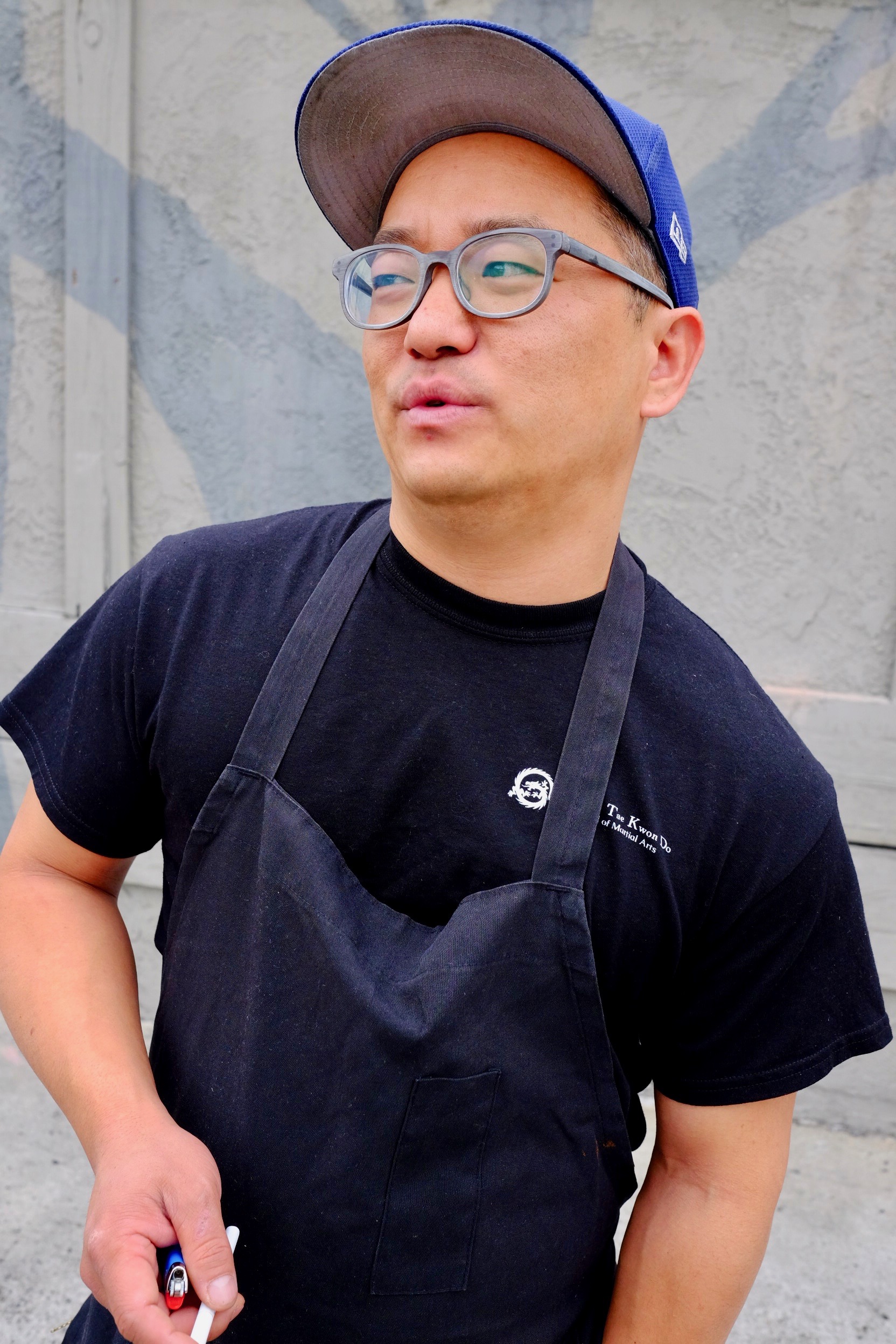James has been the owner and head chef at Piper’s Restaurant, a Los Angeles establishment that has been in operation on Western Avenue in Koreatown since 1964. His family took over the American-style diner since 1997, adding Korean-fusion entrées to the menu, and the restaurant has hosted Koreatown regulars, Dodgers viewings, church choir rehearsals, and many, many more community events for over 20 years. Recently, Piper’s announced that it will be closing its doors, so we wanted to highlight the man in the kitchen. Plus—he’s a former KYCC youth program attendee from the 1990s!
Where is your hometown?
I was born in 1980 in Glendale, California. My parents had recently immigrated to the U.S. in 1979, originally settled in Koreatown, and I was born shortly after their arrival. I attended a small Korean private school, Wilshire Private School, until the 2nd grade. Then, my parents then moved to Glendale, where I finished my elementary, junior high, and high school education. I attended CSUN for my post- secondary education. I’ve been living in Koreatown ever since I got married in 2006.
Do you live or work in Koreatown?
Both. I currently manage a restaurant—Piper’s Restaurant on Western Avenue. Piper’s is a 50- year old diner that was established in 1964. The restaurant started before Koreatown was even Koreatown. My family took over the restaurant in 1997 and we’ve been serving American comfort food ever since. The original owner was Greek, the second family was Russian, and my Korean American family being the third. We kept the majority of the original staff; but naturally, we started adding some Korean food to the menu. We now have an entire Korean menu which feature Korean fusion dishes like kimchi pasta and kimchi fried rice. We also added a full selection of liquor as well. I started working at Piper’s as a waiter when I was a junior in high school. When I started, I started at the bottom of the food chain in the restaurant. I learned how to cook and wash dishes, but when I was 24, I took over management. When I got my management position I still didn’t know what the hell I was doing. I made a lot of mistakes and got chewed out by customers for not handling plates properly, I missed my bill payments, but here I am 20 years later. In 2004, we opened a Korean-themed sports bar next to the restaurant. Our bar started with three beers on tap, but eventually grew to 23 taps. The bar started with 1 TV, and now we’re at 18.
What are your thoughts on Koreatown?
I see the homelessness in our community and see tents here and there. Actually, I’ve hired homeless people at my restaurants on three different occasions, but on all three occasions it didn’t work out.
One positive aspect of our community now is its diversity. Koreatown used to be an area exclusive to Koreans. Even 10 years ago, it was a rare sight to see a non-Korean living in or just walking around Koreatown. But now, you walk into a Korean BBQ restaurant and realize that over half the restaurant patrons are not Korean. Foreigners are now supporting our businesses and our culture. Almost everyone loves Korean food and culture now.
As far as the community is concerned, even the businessowners within K-Town have changed. Now, there are Chinese people who are settled in investing, owning and operating businesses. There are other non-Koreans coming in from Hollywood and Downtown.
Even my bar has been through a lot of changes. It has a lot to do with social media—like Yelp and Thrillist. People want to explore and try new things, and they end up using these websites to choose what they do or eat. They’ll search for things like “Best Place to Watch a Dodgers Game” or “Best Place to Eat Silkworm Cocoon Soup.”
I’ve adjusted our menu to include Korean writing, and it brought more Korean customers to our door. I had previously gotten a lot of complaints saying, “We come here all the time, but we don’t understand what to order.” In my opinion, these days, even Koreans feel left out in Koreatown. For example, people ask me, “What do you think about all the Chinese eating at Baekjeong and now it takes two hours.” I honestly believed that it was bound to happen. You can’t stop gentrification, but some Koreans now feel like they aren’t home, as they aren’t living in their Korean bubble. K-Town nightlife is good too, but now, it’s a little bland, a little watered down compared to before.
What are your thoughts on Western Avenue?
Koreatown is ever expanding. It used to be Wilshire and Vermont, but now, it goes to Alvarado, then to La Brea and Santa Monica Blvd. Even as far as Western, there are a lot of new businesses like Biergarten and The Bun Shop. Steven Yeun’s bar, TanoBar, has become a little FOB hangout. I’m hoping one day that Western can become like 6th and Alexandria, where there are a bunch of restaurants, bars, and nightlife in one area.
What is your favorite place in Koreatown?
The area around Brown Derby Plaza, where The Boiling Crab is. That was the spot of my golden days 20 years ago. I would get into fights with gang members, like LGKK (Last Generation Korean Killers) and Chinese gangs too. Every kid that lived in the suburbs came out to Koreatown to party. During the ’90s, everyone from a 20-30 miles radius would travel to K-Town for fun or food. I miss those days. Nobody died, thank god, and nobody got locked up for too long.
